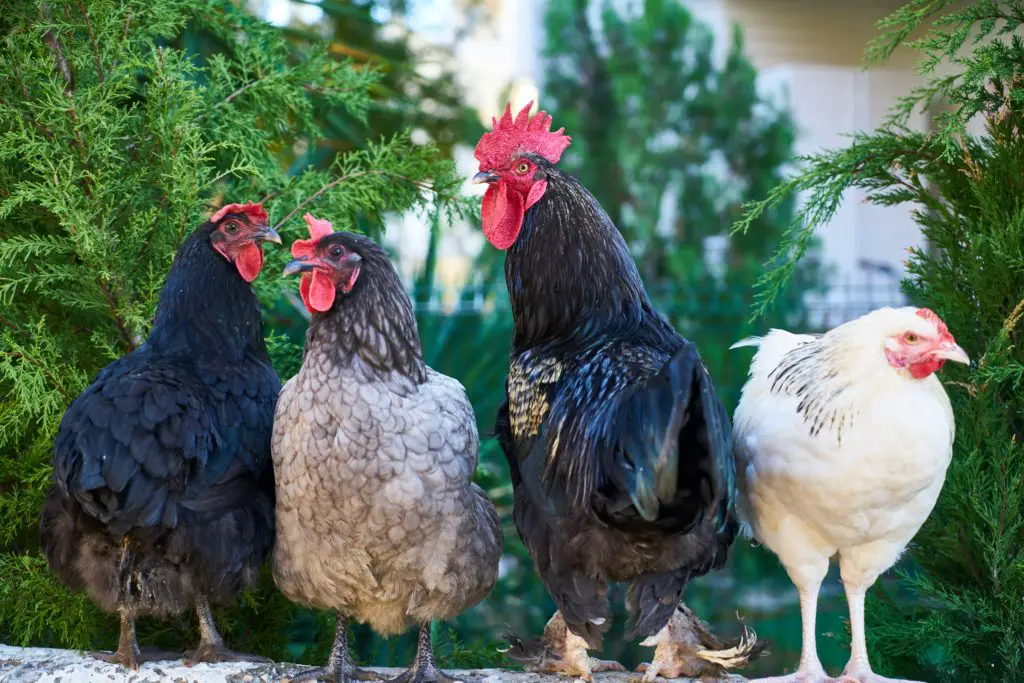What is ‘Bird Flu’ or ‘Avian Influenza’? Does it affect humans too?
As you may have heard a lot about ‘Bird Flu’ in the news. People are scared and asking a lot of questions about Bird Flu. So I will answer some of the common queries on ‘Bird Flu’. Let’s discuss this topic.
What is ‘Bird Flu’ or ‘Avian Influenza’?
Avian means ‘Bird’ and Influenza means ‘flu’. So, Avian Influenza is a flu seen in birds.
What causes Bird Flu?
It is caused by a virus named Type A Influenza Virus. There are 4 types of influenza viruses – A, B, C and D which are further subdivided into various subtypes on the basis of two proteins on their surface: Hemagglutinin (HA) and Neuraminidase (NA).
There are 18 known Hemagglutinin (HA) subtypes and 11 known Neuraminidase (NA) subtypes. These subtypes of viruses may have different combinations of HA and NA proteins. E.g, “H7N2 virus” is the subtype with ‘HA 7 protein and an NA 2 protein’. Likewise, “H5N1” virus has an HA 5 protein and an NA 1 protein.
All known subtypes can infect birds, except subtypes H17N10 and H18N11, which have only been found in bats. Currently, only two subtypes (i.e., H1N1, and H3N2) are currently in circulation among people. Some subtypes can infect animals like H7N7 and H3N8. They can cause illness in horses and dogs.
Where are Bird Flu or Avian Influenza Viruses present?
These viruses are present in wild aquatic birds throughout the world. But they can infect domestic poultry (e.g chickens, fowls) and other species of birds and animals.
Does Bird Flu affect humans too?
Normally they don’t infect humans. However, human infections with bird flu have occurred in the past. H5, H7 and H9 viruses are the most common subtypes of Influenza A virus that can cause infections in humans. Less common subtypes are H10N8, H10N7, and H6N8.
H5 viruses have 9 subtypes ranging from H5N1 to H5N9. Human infection of Bird Flu (H5N1) virus has been reported in 16 countries, resulting in severe pneumonia and more than 50% mortality.
H7 viruses also have 9 subtypes ranging from H7N1 to H7N9. They rarely cause infection in humans. H7N9 is the most common subtype of H7 which is associated with human infection in Asians. It was first detected in China in 2013. Although rare they can cause severe respiratory illness and death. Other subtypes can cause mild to moderate symptoms in people like conjunctivitis, cold, cough etc.
H9 viruses also have 9 subtypes ranging from H9N1 to H9N9. The H9N2 virus has been detected in bird populations in Asia, Europe, the Middle East and Africa. H9N2 subtype has infected people in the past generally causing mild upper respiratory tract illness; one infection has resulted in death.
Have there been any outbreaks of Bird Flu in the past?
Yes, they have happened many times in the past in poultry. These outbreaks of Avian influenza A viruses or Bird Flu in poultry have been associated with illness and death in people in regions like Asia, Africa, Europe, the Pacific, the Near East and some parts of North America. Notable outbreaks that happened in the past in the U.S. are H5 outbreaks in 2014-2015, H7N8 in 2016, H7N2 in cats in 2016, H7N9 in 2017.
Current Status of Bird Flu Outbreak 2021 in India
As of today (11th January 2021), 9 states have reported the cases of Bird flu or avian influenza. These states include Kerala, Himachal Pradesh, Haryana, Gujrat, Madhya Pradesh, Rajasthan, Delhi, Uttar Pradesh, and Maharashtra.
How Bird Flu or Avian Influenza can transmit to Humans?
Birds that are infected with avian influenza virus shed viruses in their saliva and faeces. Human infections can happen when enough virus gets into a person’s body through eyes, nose or mouth, or through breathing when the virus is in the air (in droplets). Infection can also occur when a person touches something that has the virus on it then touches their mouth, eyes or nose.
How Can I prevent myself from Bird Flu or Avian Influenza?
You can follow these measures for prevention:
- Avoid contact with birds especially wild birds. Observe them while maintaining some distance (for those who like to watch birds aka ‘Bird Watchers’)
- Stay away from domestic poultry (e.g chickens, fowls) if they appear sick or die mysteriously.
- Don’t touch surfaces which are contaminated with faeces from wild birds or domestic poultry.
People who are working in poultry or avian influenza outbreak responders are advised to take all necessary precautions including the use of Personal Protective Equipments (PPE’s). They need to follow all hygiene protocols to prevent infection. Moreover, they are advised to get a seasonal influenza vaccination every year, preferably two weeks before engaging in an outbreak response (it takes some time to develop antibodies).
Disclaimer – Seasonal Influenza Vaccination will not protect you against Bird Flu virus but it will prevent co-infection with seasonal influenza virus. So you won’t have to worry about 2 infections.
How can I report about dead birds/poultry?
If you find dead birds/poultry, who died because of unknown reasons, contact your local municipal authorities which are designated to investigate such cases. They will further investigate the reason for death by testing for viral and other infections. This can help in early detection of infection and thus prevent outbreaks.
Where these tests are done in India?
Testing facilities are currently available at AIIMS, New Delhi, and National Institute of Virology, Pune.
What precautions should I take while preparing food?
The virus is destroyed at a temperature of 70o C for 30 minutes. So you can eat poultry and related products without any fear of getting an infection if you cook your food properly. Make sure to wash your hands properly with soap and water after handling eggs and poultry.
Can I travel to countries having Bird Flu Outbreaks?
Yes, you can travel to countries having Bird Flu Outbreaks. Just follow above-mentioned precautions like keeping a distance from wild birds and poultry, Cooking your food properly and washing your hands with soap and water after handling eggs and poultry.
What to do if I had direct contact with infected wild birds or domestic poultry?
Follow these steps:
1. Keep a watch on your health and observe for any signs/symptoms of infection for at least 10 days.
2. Contact your local health authorities immediately if you develop any signs or symptoms during the 10-day observation period.
What are the signs and symptoms of Bird Flu or Avian Influenza infection?
Following are the signs/symptoms of Bird Flu or Avian Influenza infection:
- Fever with or without Chills.
- Sore throat, Cough, Sneezing, Runny Nose.
- Nausea/Vomiting or Diarrhoea.
- Rashes.
- Body ache, Fatigue, or Headaches.
- Redness of eyes with or without irritation, itching.
- Shortness of breath or breathing difficulties.
- Seizures.
What tests are done?
Your testing authority will take sample from your nose or throat with a swab and they will test the sample for the Avian Influenza Type A virus.
Is there any vaccine available for Bird Flu or Avian Influenza Virus?
No, Vaccine for Bird Flu or Avian Influenza Virus is not available yet. Latest information on vaccines can be found on WHO website (1,2)
What treatment options are available for Bird Flu or Avian Influenza Virus infection in Humans?
According to CDC, currently approved neuraminidase inhibitor antiviral agents like oseltamivir, peramivir and zanamivir etc. can be considered for the treatment of hospitalised patients and chemoprophylaxis in people who came in contact with infected birds or people. Treatment with these agents is based on clinical judgment and condition of the patient. For hospitalized patients and outpatients with severe, complicated, or progressive illness (e.g., development of pneumonia), treatment with oral or enterically administered oseltamivir is recommended.
Is there any treatment for Bird Flu in Birds and Animals?
No treatment is available for Bird Flu or Avian Influenza in birds and animals. Culling is the only option to control the outbreak.
What is Culling?
Selective slaughtering of those birds and animals who are suffering from Bird Flu or Avian Influenza.










